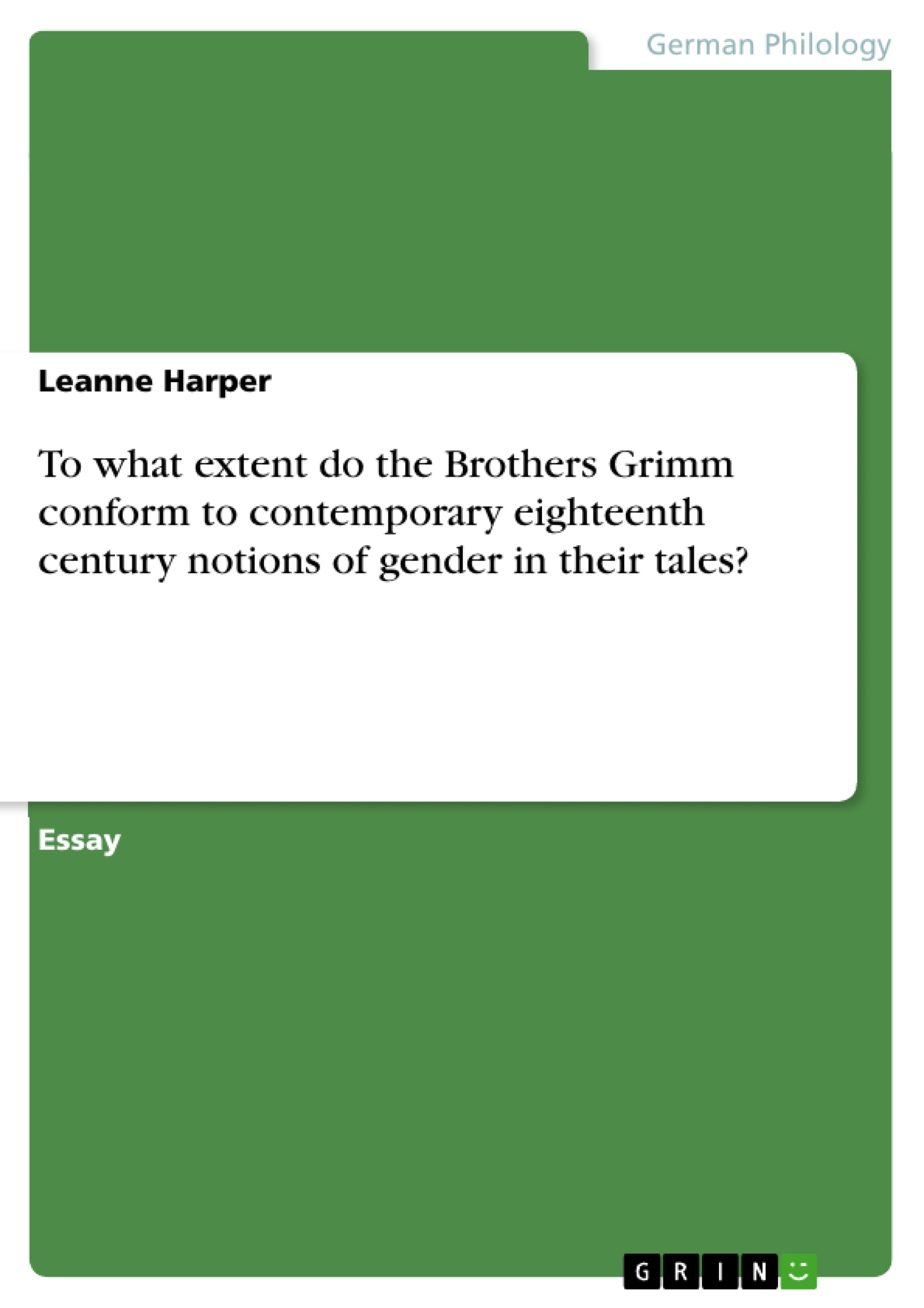A detailed essay which looks closely at the gender issues in the classic Grimms' tales, from Cinderella and Rapunzel to the more obscure Frau Holle(to name just a few).
The essay explores how the tales were edited by the Grimms to cater for the gender roles established by the up and coming bourgeois in Germany.
Table of Contents
- Sexual Repression and Prudery
- Christian Values
- Passivity
- Domestication
- Motherhood
Objectives and Key Themes
This essay investigates how the Brothers Grimm's fairy tales reflect and perpetuate contemporary 19th-century notions of gender in mid-nineteenth century Germany, specifically focusing on the roles of daughters, wives, and mothers. The essay analyzes how the Grimms' tales, particularly the 1812 and 1857 editions, contribute to the social conditioning of women within a context of emerging bourgeois values and a desire to define the social roles of women.
- The portrayal of female sexuality and its regulation in the tales
- The influence of patriarchal Christian values on the depiction of women's behavior, particularly curiosity
- The emphasis on female passivity, silence, and obedience in the narratives
- The representation of domestication and the division between the private and public spheres for women
- The portrayal of motherhood and its significance within the context of bourgeois values
Chapter Summaries
The essay begins by exploring the concept of sexual repression and prudery in the Grimms' tales, examining how stories like Rapunzel and Der Frosch König were altered to align with bourgeois ideals of female modesty and chastity. It then delves into the influence of Christian values, analyzing tales like Frau Trude and Marienkind to demonstrate how female curiosity is linked to Eve's transgression and punished through silencing and restraint. The essay further examines the theme of female passivity, illustrating how characters like Aschenputtel (Cinderella) and Rapunzel are portrayed as silent, compliant figures who are ultimately rewarded for their obedience and lack of assertiveness.
Keywords
The primary keywords and focus topics of this text are: Brothers Grimm, fairy tales, gender roles, 19th-century Germany, bourgeois values, sexual repression, Christian values, female passivity, domestication, motherhood, silence, obedience, curiosity, Rapunzel, Der Frosch König, Frau Trude, Marienkind, Aschenputtel.
- Citar trabajo
- Leanne Harper (Autor), 2011, To what extent do the Brothers Grimm conform to contemporary eighteenth century notions of gender in their tales?, Múnich, GRIN Verlag, https://www.grin.com/document/200826



